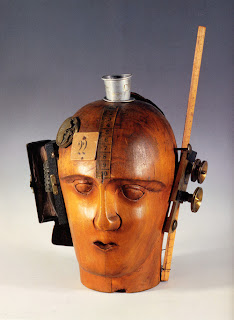 Of the group dada, John Heartfield remains the best known and
revered as a result of his single-minded devotion to anti-Nazi political
activism. but, his early montages were collaborative efforts that resemble the
work of all the other Dadaists. He and George Grosz experimented with cut-up
pieces of newspaper and photos of their fellow artists, and produced many of
the early designs for Dada posters and manifestos.
Of the group dada, John Heartfield remains the best known and
revered as a result of his single-minded devotion to anti-Nazi political
activism. but, his early montages were collaborative efforts that resemble the
work of all the other Dadaists. He and George Grosz experimented with cut-up
pieces of newspaper and photos of their fellow artists, and produced many of
the early designs for Dada posters and manifestos.
He had never been afraid to express his views, even to the point
of anglicising his German name in response to the horrors of the First World War.
Heartfield and his brother Wieland Herzfelde founded a publishing house
Malik-Verlag, which provided an outlet for his highly provocative propaganda. Much of Heartfield's
best work was for the front cover of the newspaper AIZ
(Arbeiter-Illustrierte Zeitung) which
continued to publish in Germany until 1933, when artist and newspaper moved to
Prague to escape Nazi persecution.
Whereas all the other Dada exponents of montages produced art,
for Heartfield the message was always primary, and most of his output has the
appearance of newspaper photographs. He avidly collected thousands of photos of
all the leading political figures of the age, and conveyed his messages with
the minimum of artistry, but with great technical precision. In many ways he
acted more as an originator of ideas, and as film director, since he employed
professional photographers to carry out his detailed darkroom instructions.
For Heartfield the definition of "photomontage" was
wider than for most, insisting that it should include the single photo with
caption, since text and image interacted with each other in a similar way to
multiple images. Heartfield's use of captions was, and perhaps still is,
unsurpassed. Many of his best works utilise famous quotes of leading Nazis, and
subtly undermine the intended message by quite ingenious visual puns. So, when
Hitler said,"millions
stand behind me", he was boasting of his
popular support, whilst Heartfield used this to reveal the fact that the Nazis
were being bankrolled by leading German industrialists.




































